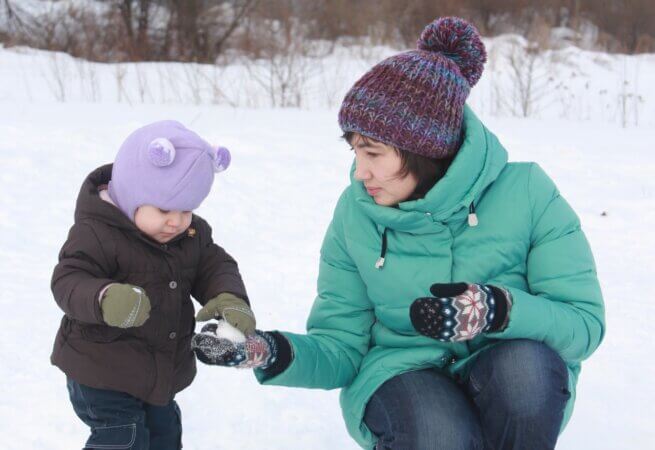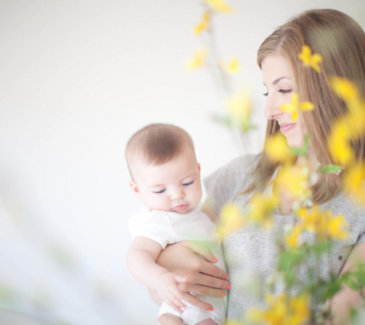The gray Midwest winter day matched the gloom wrapping itself around my heart. Sadness loomed above me like Eeyore’s rain cloud. While saying goodbye to Christmas was always sad, the prospect of nothing ahead but the lingering cold and cloudy days stirred disappointment.
Nothing seemed to lift my spirits. My inner critic soared. I struggled to get out of bed in the morning. My energy levels dropped. I couldn’t shake this melancholy.
Why do I feel like this every winter? I wondered as I drove to pick up my kids from school.
Then it dawned on me. Growing up, my mother struggled with seasonal affective disorder. I didn’t think I ever would, but when we relocated to the Midwest years ago, my winters were marked by tears and weariness. Pushing through until spring felt more daunting with each passing year.
Perhaps it was time to admit I had seasonal affective disorder and do more than wait it out. But wasn’t my faith enough to beat this?
What is Seasonal Affective Disorder?
Seasonal Affective Disorder (SAD) is a type of depression linked to the seasons, most commonly from shorter sunlight hours in the fall and winter. SAD is sometimes called winter depression. The depression lifts with the increase of daylight in the spring and summer months. Some people may experience a summer depression from too much light, but this is less common.
People with SAD may experience an appetite shift (such as wanting to consume sweet or starchy foods more than usual), less energy, tiredness, trouble focusing, short temper, not wanting to leave home, a heightened sensitivity to negative feedback, and sleeping in later than normal.
Each year, around 10 to 20 percent of people struggle with seasonal affective disorder. And women are four times more likely to develop SAD. This means in a church of 500 people, 50 might experience SAD. Of those 50, around 38 will be women, while only 13 will be men.
Given the higher likelihood of women getting SAD, we can look out for symptoms in ourselves or others we know. We don’t want a friend or loved one to struggle without help. The more we raise awareness, the probability increases of someone with SAD getting help since most people self-diagnose before seeking help. While a cure for SAD doesn’t exist, taking proactive steps can minimize the symptoms.
Faith to get help
Throughout Jesus’ ministry on earth, he healed countless people of their ailments. When we read about Jesus, he is often putting in long hours to heal the sick (Luke 4:40). Jesus cared about the pain and ailments of those living in this broken world.
One of my favorite healing stories is the woman who has been bleeding for twelve years. She experienced heart-wrenching sorrow from a sickness that kept her perpetually unclean and forbidden from her community. She had sunk every penny into medical help but remained unwell. When the woman catches wind Jesus is passing through her neighborhood, she drops everything to chase after him because she knows he is her only hope of healing. And for those of us familiar with this beloved story, she merely touches the edge of Jesus’ clothes and is instantly healed (Luke 8:42–48).
But what strikes me is the moment the woman realizes she “was not hidden” (Luke 8:47, ESV). Jesus didn’t want her healing to be a secret. Jesus not only healed her—as wonderful as that was—he also saw her pain and sorrow. He wanted her to be better and experience his love along the way. While she had been hidden from society and attempted to cloak herself in the crowd, God’s eye had always been on her. Gone were her days tucked away from the world. Now she could be a part of everyday life again.
And so it is with us. Jesus doesn’t want us to struggle in our pain and isolation. He desires for us to be well. And like this precious woman, we can seek the help we need. Our faith can’t heal something beyond our control, but sometimes outside help can be the very tool God uses to bring healing and aid.
Moving forward
Finally acknowledging that I needed outside help, I spoke with my doctor. She suggested I start simple—by taking a specific amount of vitamin D3 daily based upon a blood test. And in the coming weeks, the change in me was. . . well, night and day. My joy and energy resurfaced, and the cloud over my head dissipated.
But I would need to be proactive each year by taking my vitamins before late fall and then daily until spring. I also intentionally took a fifteen-minute walk during the school week, despite the cold weather. The fresh air and whatever sunlight would filter through the clouds made a positive impact on my mood. For some, they may need to try light therapy, speak with a counselor, or even take a prescribed seasonal antidepressant.
But whatever path is necessary to move toward health, it can be done in faith, knowing God delights to see us well and not hidden in our suffering. We can resume our normal lives without sadness tugging us on a downward spiral and like the woman healed from her bleeding, we can experience the peace of God from this mending.
Consider a few extra resources:



